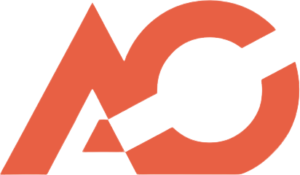On December 20, 2024, from 1:00 PM to 2:30 PM, I participated in a webinar titled “Intro to Blender: First Steps into 3D Design.” The event was simultaneously broadcast on Google Meet and Facebook Live to maximize audience reach. Mr. Rapi Ybiernas, a 3D Generalist and Graphic Artist at Certifi.world, served as our resource speaker.
The webinar provided an introduction to Blender, a free 3D design software, focusing on fundamental design concepts. Rather than utilizing traditional slides, Mr. Ybiernas opted for a live demonstration approach, showcasing real-time 3D design creation. This practical methodology allowed participants to observe the actual workflow process directly rather than engaging with theoretical concepts alone.
As a member of the organizing team, my responsibilities included developing promotional materials, managing the Facebook Live broadcast setup, and creating both registration and feedback forms for participants. While this was Mr. Ybiernas’s first webinar presentation experience, which presented certain challenges, his hands-on demonstration proved highly effective for conveying 3D design concepts.
The webinar revealed how democratized 3D design has become through free tools like Blender. I discovered that even beginners can successfully create basic 3D models with appropriate guidance. The live demonstration illustrated that watching someone navigate through the process step by step is often more beneficial than following written instructions, particularly for visually-oriented software like Blender.
Mr. Ybiernas’s practical approach emphasized the importance of understanding Blender’s interface before attempting complex designs. I now recognize that mastering navigation tools, comprehending the coordinate system, and learning keyboard shortcuts are foundational elements for anyone beginning with 3D design. These fundamentals significantly enhance the creative process and reduce frustration for newcomers.
I gained perspective on how 3D design integrates technical proficiency with creative expression. The speaker demonstrated how to begin with simple shapes and progressively transform them into more sophisticated objects. This incremental approach makes 3D design more accessible to beginners. I also learned about the diverse applications for 3D design skills, spanning game development, animation, product visualization, and architectural rendering.
Implementing Blender within our team’s workflow could enhance our visual content creation without additional software expenses, as it’s freely available and open-source. We could utilize it to create more compelling graphics for social media, presentations, and website materials. Even incorporating simple 3D elements could distinctively elevate our visual communications compared to conventional 2D graphics.
The techniques demonstrated during the webinar could enable us to develop more interactive training resources. Beyond traditional text and images, we could create 3D models that illustrate products or processes from multiple perspectives. This approach would be particularly valuable for explaining complex concepts that are challenging to represent through conventional media.
For upcoming events, we could employ Blender to design virtual environments or 3D animations for promotional content. These visually engaging elements would likely increase audience interest and attendance. We might also consider offering basic Blender training to interested team members, expanding our in-house design capabilities rather than relying exclusively on outsourced 3D design services.
Our promotional materials effectively communicated the webinar’s purpose and generated substantial interest from the target audience. The registration form collected essential information while maintaining sufficient simplicity to encourage participation. The timing of the webinar, scheduled just before the holiday break, proved advantageous as many participants enjoyed more flexible schedules.
The dual-platform approach utilizing both Google Meet and Facebook Live demonstrated effectiveness. Google Meet facilitated direct interaction between participants and the presenter, while Facebook Live expanded our audience reach and automatically preserved the session for asynchronous viewing. Despite the technical content nature, stream quality remained consistent throughout the demonstration.
The post-event evaluation form received substantial response rates and provided valuable insights regarding participant preferences. Many appreciated experiencing the actual software in use rather than theoretical explanations. The live demonstration format, though lacking formal presentation structure, received positive feedback for its authenticity and practical value. Participants particularly valued observing how a professional navigates challenges in real-time.
For future technical demonstrations, we should prepare concise outline documents to distribute to participants beforehand. This would enhance their ability to follow along, even without formal slides. A simple PDF containing key concepts, terminology, and the general demonstration flow would provide attendees with a conceptual framework for the presentation.
We should implement brief training sessions on webinar presentation techniques for speakers, especially first-time presenters. This could include guidance on pacing, virtual audience engagement, and managing technical demonstrations while addressing questions. Assigning a dedicated moderator to manage chat interactions and relay questions would enable presenters to maintain focus on their demonstrations.
Developing follow-up resources would extend the webinar’s value beyond the live event. These could include session recordings, links to additional Blender tutorials, and starter project files for independent exploration. Additionally, establishing a community platform where participants could share progress and seek assistance would foster continued learning and networking opportunities.

